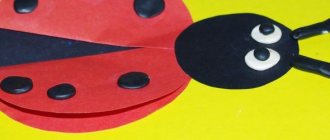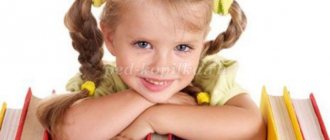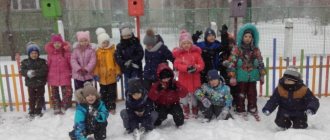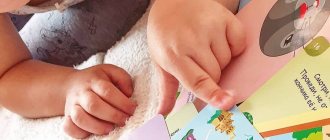Project at the preschool educational institution “Useful and entertaining advice from Uncle Zhora Lampochkin”
- May 27, 2015
Conference “Project activity in an educational institution - 2015”
Nomination “Pedagogical project in a preschool institution”
Relevance of the project topic. One of the most pressing problems of the modern world is saving electrical energy and finding ways to conserve energy resources. In the process of implementing the task of developing the fundamentals of energy saving in preschoolers, a contradiction between the need to carry out this work on the basis of material that preschoolers can understand, and the presence in the methodological literature and Internet resources of information and reference materials that solve this problem.
The idea of resolving this contradiction is to develop and implement a project to teach preschoolers the basics of energy saving, the participants of which are teachers, preschoolers and their parents. Joint work on the project will increase the interest of preschoolers and their parents in the problem of energy saving, expand their knowledge in this area, and will also help strengthen parent-child relationships in the process of joint activities.
The goal of the project: to educate preschool children of an elementary culture of energy saving through the organization of various types of joint activities of the teacher, students and their parents.
Project objectives.
For pupils:
1. Enrichment and systematization of preschool children’s knowledge about electricity and methods of its generation.
2. Development of interest in the problem of saving energy resources.
3. Development of skills of economical behavior in relation to energy resources.
4. Development of intellectual abilities in preschoolers, the ability to compare facts, phenomena, objects, compare and analyze them.
5. Improving skills in working with an interactive whiteboard and multimedia equipment.
For the teacher:
1. Creating conditions for familiarizing pupils with energy resources and their production through enriching the subject-development environment and a system of activities with pupils and their parents.
2. Consolidating skills in organizing project activities with preschool children.
3. Development of ICT competence of the teacher.
4. Formation of skills in working with an interactive whiteboard, multimedia equipment and Internet resources.
For parents:
1. Involving parents and other family members of pupils in joint activities and participation in preschool educational institutions projects.
2. Activation of the creative potential of parents of pupils.
3. Ensuring favorable, emotionally rich relationships between parents and children.
4. Increasing the pedagogical competence of parents, enriching their educational experience.
Type of project: informational, research, creative.
Project duration: short-term (5 weeks).
Project implementation period: October 2014 – November 2014.
Project participants: teachers, children of senior preschool age, parents.
Project leader: senior teacher.
Project working group: teachers of senior and preparatory school groups.
Expected results:
1. Expanding the horizons of preschoolers about energy resources and the culture of energy saving.
2. Development of energy-saving behavior skills among students and their parents.
3. Development in pupils of curiosity, creativity, cognitive activity and the ability to use acquired knowledge in various activities and behavior.
4. Harmonization of parent-child relationships.
5. Development of ICT competence of teachers, students and their parents.
Project product: an electronic book “Useful and Entertaining Advice from Uncle Zhora Lampochkin” created by teachers, students and parents in joint activities, containing text, photo, audio and video information that is understandable and usable for children of senior preschool age.
Stages of project activities.
1. Preparatory stage – 1 week.
2. Practical stage – 3 weeks.
The materials accumulated during the implementation of the practical stage of the project are summarized in the form of an e-book “Useful and entertaining advice from Uncle Zhora Lampochkin.” The book contains an information block, educational tasks, photographs of the work of preschoolers and their parents, as well as video materials from Internet resources and our own production.
The final stage is 1 week.
Appendix 1. Pedagogical project
Appendix 2. Electronic book.
Author: Elena Vyacheslavovna Oreshenkova, senior teacher at MBDOU DS No. 24 in the city of Smolensk.
MAGAZINE Preschooler.RF
Project: “What is energy saving?” in the pre-school group.Type of project: educational and research
Project implementation period: short-term.
Project participants: children of the preparatory group, teachers, parents of students.
Relevance of the project
The economical use of energy is the main problem for all of humanity, since its production requires a lot of natural resources (water, forests, minerals). The result is a negative impact on the environment. All these factors lead to the conclusion that it is wiser to reduce energy consumption rather than constantly increase its production.
Problem
If we constantly increase capacity to generate more electricity and at the same time we need to cut down more forests, extract more oil, gas and coal, block more rivers for the construction of hydroelectric power stations, will we be able to protect our nature from destruction? What do we need to do? How to learn to save energy resources?
Expected result.
Laying the foundation for a careful attitude towards energy resources and fostering an elementary culture of energy saving.
Formation of an idea of the relationship between human activity and the environment.
The goal of the project: to create conditions for the formation in children of the fundamentals of a careful attitude towards the use of electricity and the education of an elementary culture of energy saving through the cognitive activities of children.
Project objectives:
For children
- Introduce children to different types of energy.
- To form in preschoolers ideas about electricity, where it “lives” , how it gets into homes and is used by people.
- To acquaint children with the past and present of lighting devices, with the process of their transformation by man.
- Establish rules for safe handling of electrical
devices.
6. Instill in children a careful attitude towards energy resources, based on the initial skills of their rational use.
For teachers:
- Increase the level of professional competence, enrich knowledge on current issues of energy saving.
- Strengthen the skills of organizing project activities with preschool children.
- Create conditions for familiarizing pupils with energy resources through enriching the subject-developmental environment and a system of activities with pupils and their parents
For parents
- To promote interest in the content of energy-saving work with children and participation in joint events.
- Increase the pedagogical competence of parents, enrich their educational experience, and promote the harmonization of parent-child relationships.
- Replenish knowledge on energy saving, be more responsible about the consumption of energy resources.
Immersion in the project
1. Creating a problem situation: I invite the children to dance to musical accompaniment as a warm-up. I turn on the tape recorder (not connected to the mains), it does not work.
Question for children: What happened? Why doesn't the tape recorder work?
I invite children to formulate a new topic for knowledge, what questions interest them, and where they can be answered, using the model of three questions (What do we know? What do we want to know? What do we need to do to find out?).
Project work planning:
Activities of the teacher:
Studying literature on the topic of the project.
Development of the project structure, thematic planning of all types of children's activities.
Selection of illustrative material, didactic games.
Discussion with parents of issues related to the implementation of projects.
Involving kindergarten staff to participate in the project.
Parents' activities:
Participation in a survey on the topic: “Do you know how to save energy?”
Studying literature on the topic of the project, selecting illustrative material.
Discussion of issues related to the implementation of projects.
Carrying out activities at home aimed at saving water, heat and electricity.
Carrying out observations for 3 days - how many liters of water and electricity can be saved if you follow the rules of economy and make a comparative analysis with normal (uneconomical) consumption.
Children's activities:
Conversations on the topic:
- “What do we know about electricity? Main sources of electricity"
- "Electrical devices and their purpose"
- Rules for safe behavior “Caution! Electricity!"
- “What is energy saving, how can you save energy resources?”
Experimentation on the topic: “Static electricity”
- "Revived Hair"
- "Magic Ball"
- "Magic Wands"
Observation: “Where does electric current live in kindergarten?”
Examination of illustrations: “Household appliances: ancient and modern .
Didactic games: “Good and bad”
“Household appliances – ancient and modern”
“Riddles and guesses about electrical appliances”
Drawing.
- "Electrical household appliances"
- "Reminders for energy saving"
Reading fiction
- Author's fairy tale “Majesty-Electricity” (Eliseeva Yana)
- Poetry:
“He Runs on a Wire” Yakov Byl
“There is a corner in the apartment” Vedenyatina Nadezhda
3. Fairy tale: “How the sun lit an electric light bulb” Zhilinsky I.M.
Project product
The result of children's activities:
Design of the exhibition of drawings “Household Electrical Appliances”
Design of the collage “Energoshi’s Tips”
Carrying out promotions for kindergarten employees:
Dissemination of warning signs to conserve energy resources
For parents - Design of the transport information folder: “Electricity saving. Water saving. Heat saving" .
Distribution of leaflets “How to save energy. Warmth and water?
Results obtained for the project.
Children learned the rules for safe handling of electrical
devices.
Children's horizons about energy resources and the culture of energy saving have expanded.
Children have developed energy-saving behavior skills in kindergarten and at home;
ideas about the relationship between human activity and the environment have been formed.
Parents analyzed the benefits and benefits of economical consumption of electricity, water, heat and decided to follow energy saving rules at home and at work.
The kindergarten employees actively took part in the energy saving campaign.
Porotova Vera Petrovna
Teacher at MDOU kindergarten No. 50. Ust-Kut, Irkutsk region.
| Next > |
Summary of a lesson on energy saving for middle group children. "Learning to save"
Lesson in the middle group on energy saving “Bear visiting the guys”
Software tasks:
• To form children's idea of a careful, economical attitude towards electricity and natural resources.
• Develop attention, memory, thinking, imagination and speech; ability to classify household appliances.
• To educate children in correct safe behavior with household electrical appliances.
Game equipment:
bear toy, light bulb, toy and real electrical appliances, pictures on energy saving.
Preliminary work:
• reading works of fiction: P. Andreenko “Rain”, “How the boy Petya learned to close the door behind himself”, asking riddles, looking at illustrations and talking about the book
“Technology in your home”, creation of an exhibition of children’s creative works “Learning to save energy”;
• didactic games “Light, water, sound”, “Basics of safety”
A bear (a toy or an adult in a suit) came to visit the children.
Bear:
Hello guys! Did you find out which fairy tale I'm from? ("Masha and the Bear"). Masha lives with me. In my small house the light is on all day long so that Masha can have light. And at night Masha is afraid to sleep without light, she won’t turn it off. Do you do this too? (Children's answers).
Educator
: Hello, Mishka! Guess the riddle with the guys: The house is a glass bubble, and a light lives in it! During the day he sleeps, and when he wakes up, he will light up with a bright flame.
Look what I have in my hands? (Bulb). Bear, is this light on for you? (Yes). Guys, can you tell me what the light bulb is for? (Children's answers). Yes, we turn on the light bulb so that the room is light; it is powered by electric current. And look at our group of light bulbs? (Larger lamps and they shine brighter). And if the sun is shining and it’s so bright, do you need to turn on the lights? (No, you need to save light, take care of it, not waste it - when the sun is shining, you don’t need to turn on the light bulb). Do you guys sleep with the light on at night? (Children's answers). To get a good night's sleep, you don't need to turn on the lights at night. Let it not burn in vain. Electricity is the most important part of our life! Without it, no machine can work. The current runs through the wires, bringing light into our apartment.
For the devices to work:
Fridge,
Monitors, Coffee grinder, vacuum cleaner, Current brought energy.
The first assistant in the house is our devoted and faithful friend.
Educator.
Now do you understand how important the light bulb is in our lives? Without her, the whole world would become dark and gloomy. In order for our world to be illuminated by electricity, we must treat it carefully, economically, be attentive, turn off lights and electrical appliances on time so as not to waste electricity. If everyone saves, the country will make a big profit.
Guys, let's tell Mishka what devices are plugged into the socket. (Iron, computer, TV, vacuum cleaner...) (We show Mishka some electrical appliances)
Physical education
Children pretend to be a light bulb.
When the word “doesn’t burn”, children crouch down and cover their eyes with their palms; when the word “burns” sounds, they stand up and stretch their arms up. You can read in the evening, jump, run, squat.
This is magical, the electric sun!
Bear:
Everything is clear to me now!
I will make sure that Masha does not turn on the lights in vain and saves electricity. Water Saving
Bear:
Guys, Masha’s water runs a lot when she washes herself.
It'll be sprayed all over while it's washed.
Educator:
Guess the riddle with the guys.
She is in the lake, she is in the puddle,
She is circling above us like a snowflake,
It boils in our kettle too,
She also runs in the river. (Water)
Bear:
Do you also wash your face like Masha? (Children's answers)
Finger game “We wash ourselves”
Shall I tell you where we were?
We walked to the river on the water, (we walk with two fingers on the table with both hands)
They brought some water in a bucket (we put both palms together like a ladle)
So that all the kids can wash themselves, (we wash ourselves)
Wash our ears, our eyes, (we show)
And cook porridge for breakfast. (circular movements with right hand)
Educator:
you see, the tap needs to be opened quietly so that the water flows in a thin stream. Water must also be conserved, because water can run out, and it is impossible to live without water.
Children, let's tell our hero why we need water. (Drink, cook, eat, wash, bathe, wash dishes, wash clothes). Do animals need water? (Yes) Why do animals need water? (Answers) What about the birds? (Answers) What about trees and plants? (Answers) What about the fish? (Answers) Where does water live? (in the sea, lake, river, spring, tap). What kind of water can you drink? Only fresh, not salted. There are few fresh water reserves on earth, and they are becoming less and less every year. There are countries on the planet where there is very little fresh water and people are forced to buy it for money. Children, let's tell our guest how you can save water. (Children's answers)
Educator:
Water must be respected -
Everyone should know this! It's no secret at all -
We have no life without water! Neither wash nor drink, And we will not be able to enjoy Neither nature nor the landscape Without water, everyone will fade away!
You need to save water, do not open the tap too much, the stream of water should be thin. Do you know how to save water?
How?
— If you wash your hands or face, don’t forget to turn off the tap.
— If you see that water is flowing from the tap or it is not working properly, close the tap.
— You should not brush your teeth under running water, but use a glass. Guys, you are so great! As you told our guest a lot and interestingly, you know how you can save and conserve water.
Bear:
It’s so warm here, you don’t want to leave! Masha, of course, is a good girl. She's just young and doesn't know much. It’s cold outside, and Masha doesn’t close the door well, even the hot stove doesn’t heat up.
Educator:
It’s clear that it’s okay to heat in your house, or to warm up by the fire in the yard. A lot of firewood will be lost, but there will be no heat. Guys, what do you think they need to do to keep the house warm? (Insulate the windows, close the doors and vents tightly, do not curtain the radiator) You insulate the windows, seal the cracks in the house, it will be warmer! Otherwise, you will burn all the wood, and the heat will escape through the cracks into the forest. Yes, it’s warm in our group! Olga Vasilyevna sealed all the cracks in the windows. Look. And we close the doors tightly so that the cold doesn’t come in. We also save heat, like light and water. So that the cold winter
Didn't sneak into your houses
You insulate the windows -
And live in warmth!
Educator:
Let's look at the pictures and remember what we talked about today. (Showing pictures on the topic of energy saving)
And heat, and water, and light don’t just flow, And nature doesn’t give them to us for free Among the many problems in our generation, the issue of Energy saving has to be resolved!
Bear:
thanks guys, I see that you know everything. I'll go home and teach Masha to save light, heat and water. Goodbye!
Presentation for the lesson
Back forward
Attention! Slide previews are for informational purposes only and may not represent all the features of the presentation. If you are interested in this work, please download the full version.
Project type:
group, long-term, research and creative.
Educational area:
"Cognitive Development".
Performers:
a group of children from a preparatory speech therapy group.
Project participants:
children, educators, parents of students, additional education teacher Potapova E.V., employee of Energoauditekspert LLC, project manager Kasmynin I.A.
Relevance of the project
The problem of reasonable use of energy is one of the main problems of modern humanity. On the one hand, electricity is the highest achievement of modern civilization. She replaced the light of kerosene lamps and candles with the light of electric bulbs, brought electric heaters, air conditioners, TV and radio, a computer and the Internet into our house. However, people should not only appreciate the results of human activity, but also try to spend energy resources more economically and, if possible, limit their needs. After all, limited energy resources
,
the negative impact on the environment associated with its production - all these factors lead to the conclusion that it is wiser to reduce
energy
rather than constantly increase its production.
The leading role in this process is played by environmental education
,
instilling the skills of caring for
energy resources.
Teachers have an important task
to educate a new generation that
will understand the importance of saving
energy resources ,
because caring for them guarantees the environmental purity of the world around us.
Description of the problem:
Children of preschool age are not sufficiently oriented in the evolution of modern objects of the man-made world, do not have a clear idea of why a person changes objects that he used in the past and do not have knowledge about the need for respect for human achievements and, as a result, the efficient use of all resources and electricity in particular. They also do not know how to establish a cause-and-effect relationship between the influence of man and the products of his activities on nature; they do not know that the Earth’s resources are not infinite and are difficult to restore.
Idea for solving a research problem:
To
help reveal to children the evolution of light sources, to show
the need for respect for the inventions of modern humanity and, as a result, saving energy, it was decided to create a model together with the children.
It will be possible to clearly demonstrate the history of improving lighting devices from a torch and a torch to a modern LED lamp, as well as energy-saving posters drawn and developed by children .
Objective of the project:
Formation in preschool children of initial information about the rational use of electricity and the education of an elementary culture of energy saving, the development of a retrospective and prospective view of the objects of the man-made world.
Project objectives:
For children:
- To develop in children an interest in the problem of saving energy resources, to develop initial skills in their rational use.
- To form in preschoolers ideas about electricity, where it “lives”, how it gets into homes and is used by people.
- To acquaint children with the past and present of lighting devices, with the process of their transformation by man.
- Activate search and cognitive activity, intellectual abilities, the ability to compare facts, phenomena, objects, compare and analyze them, mental activity, creative abilities.
- Involve preschoolers in useful energy saving activities.
For teachers:
- Increase the level of professional competence, enrich knowledge on current issues of energy saving.
- Strengthen the skills of organizing project activities with preschool children.
- Create conditions for familiarizing students with energy resources through enriching the subject-development environment and a system of events with students, their parents and public organizations (Energoauditexpert LLC).
For social partners:
- To promote interest in the content of energy-saving work with children
and participation in joint
events . - Increase the pedagogical competence of parents, enrich their educational experience, and promote the harmonization of parent-child relationships.
- Replenish knowledge on energy saving, be more responsible about the consumption of energy resources.
Brief summary of the project
Organizational and preparatory part: problem statement, information search.
For teachers and parents:
- Selection of methodological and fiction literature.
- Enrichment of the subject-development environment (retrofitting the experimentation corner, selection of didactic and board-printed games, selection of literature in the book corner, exhibits for organizing the exhibition “From a Splinter to a Light Bulb”).
- Conducting consultations for teachers and parents “Energy saving is everyone’s concern!”
For children:
- Thematic conversations “Why do we need electricity”, “How did the light bulb appear”, “Saving electricity - saving the planet”, “The meter visiting the guys”.
- Viewing multimedia presentations “Journey into the past of the light bulb”, “Where electricity comes to us from”
- Safety talk “Caution – electrical appliances!”
- Reading fiction, conversations on the content: Myths of Ancient Greece “Prometheus”, R.G. Podolny “How Man Tamed Fire,” a cycle of poems about the light bulb and electricity.
- Experimental research activities, experiments, natural science observations “Why is the light bulb shining?”, “Revived hair”, “Stubborn balls”, “Help Cinderella”, “Such different sources of counting”.
- Didactic games, travel games, game tasks on the topic of the project.
- Meeting with interesting people: situational conversation “Electricity lives everywhere” with the parent of one of the students, I.A. Kasmynin. (project manager of Energoauditeksper LLC).
Main part, creation of project products
- Productive activities (drawing, modeling, appliqué, modeling) on the topic, making a model.
- Exhibitions of drawings “The Cheerful Light Bulb”
- Exhibition of energy-saving posters “Save wisely!”
- Composition and presentation of fairy tales “The Adventure of the Light Bulb”
- Organization of the exhibition “From a Splinter to a Light Bulb”»
- Visit to the Lights of Moscow Museum
Project defense, summing up
- Creation and presentation of an energy-saving layout “The Adventure of a Light Bulb.”
- Drawing up methodological recommendations for teachers and parents (information booklets on energy saving).
- Defense of the project at a scientific conference for preschoolers “First Steps into Science.”
Results obtained from the project
- Systematization of preschoolers' knowledge about the properties and actions of various predecessor objects of modern light sources and lighting devices, familiarization with the history of the electric light bulb, children learned to appreciate the results of human activity and the achievements of modern civilization.
- Expanding horizons about energy resources and the culture of energy saving, developing energy-saving behavior skills among students and their parents.
- Development in pupils of curiosity, creativity, cognitive activity and the ability to use acquired knowledge in various activities and behavior.
- Increasing the level of pedagogical competence of teachers, developing a didactic complex (synopses of direct educational activities, entertainment scenarios, didactic games, experiments, visual aids - layout).
Today, society faces a very important task - to change the stereotype in the minds of every citizen that natural energy resources are inexhaustible. It is difficult to change the thinking of adults. But a preschool child can be helped to learn the basics of ecological culture, a careful and caring attitude towards the riches of the earth, towards everything that surrounds him.
In search of the most effective methods for solving this problem, we settled on the project method. It helps support children's cognitive initiative, develop the creative and communicative abilities of preschoolers, ensures the integration of educational areas and the combination of interests of all participants in the educational process: teachers, children, parents. It is the project method that makes it possible, in enthusiastic, active joint activities, to introduce each preschooler to such complex concepts as “save”, “preserve”, “electricity”, “natural resources” and introduce children to the values of environmental culture. Our experience has shown that, due to the clarity of thinking of preschool children, the results of knowledge of the world around them are best realized in productive activities and are embodied in real products. Therefore, we decided to make a practice-oriented model as the final product of children’s search and research activities on the problem of energy saving. The layout is multifunctional and its use in work can be diverse. It can serve as both an object and a means of children’s activities, makes it possible to generalize and systematize children’s knowledge and at the same time acts as a way of developing cognitive interest, aesthetic feelings and creative abilities.
And of course, it is important to understand that only targeted work on instilling a culture of energy saving in preschoolers will bear fruit in the adult lives of today’s children; they will be able to become more active helpers of public initiatives aimed at preserving and increasing the resources of our country.
It’s not very easy to make energy saving lessons for children interesting and fun. This is probably why queries related to energy saving classes are very common in search engines.
Today, while looking at the statistics of transitions to my website using search phrases, I again discovered that someone was looking for “classes in the senior group on the topic of energy saving.”
This was the first reason for writing this article.
The second reason is International Energy Saving Day, which perhaps not everyone knows about. About the fact that energy saving
important for preserving the environment, you've probably heard. They began to talk about this more and more often on radio and television.




